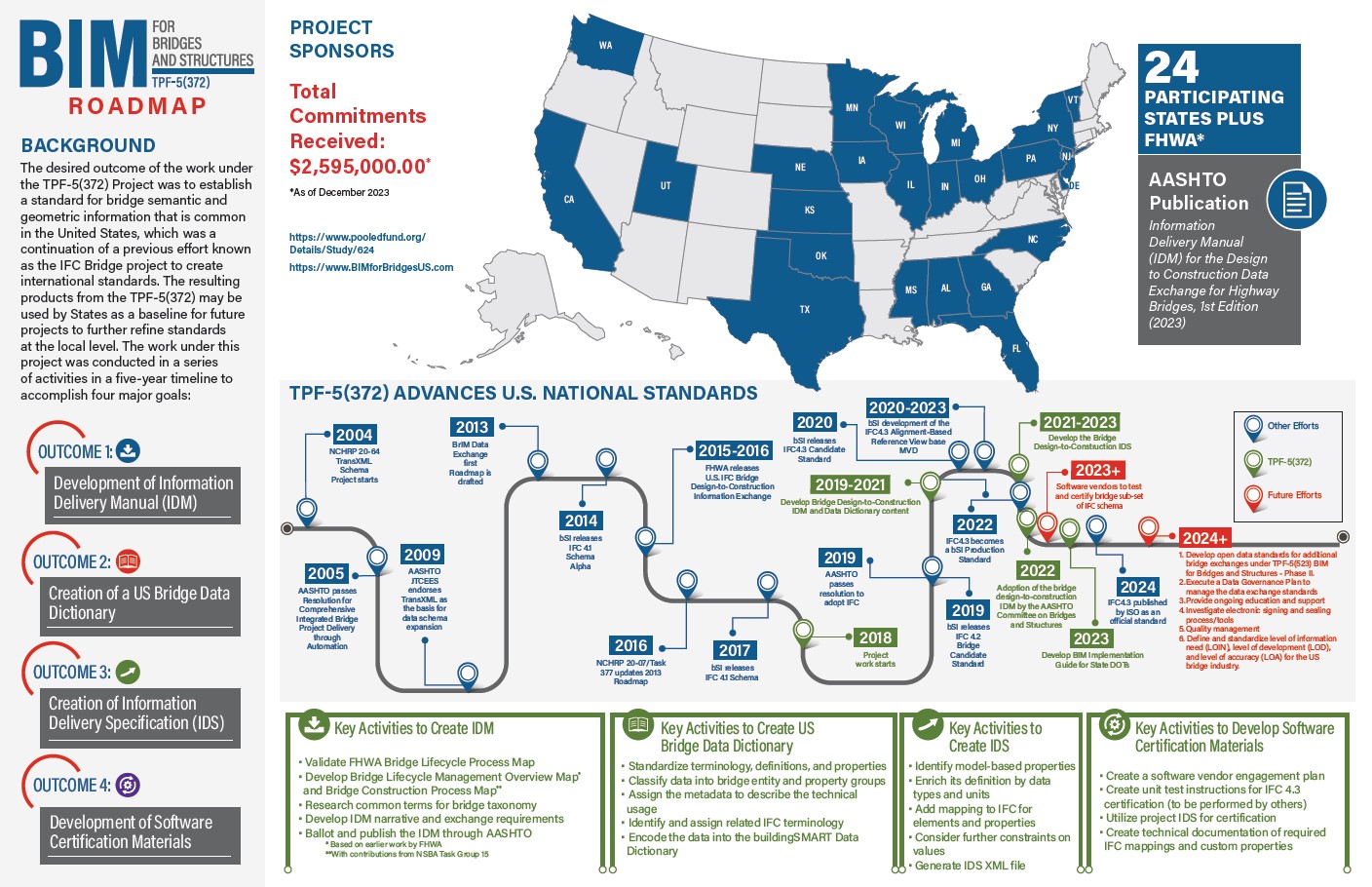BIM for Bridges and Structures
Advancing U.S national standards
UPCOMING EVENTS
There are no upcoming events.
What is TPF-5(372)?
The BIM for Bridges and Structures effort is a transportation pooled fund project, also known as TPF-5(372). The project is a collaborative effort of more than 20 states, the Federal Highway Administration, and the American Association of State and Highway and Transportation Official (AASHTO) Committee on Bridges and Structures.
The pooled fund objective is to develop an open, national standard and corresponding requirements and guidelines for identifying and exchanging the information necessary for the design, fabrication, construction, operation, and maintenance of bridges and structures. Industry Foundation Classes (IFC) is the International Standards Organization (ISO) standard for the exchange of Building Information Modeling (BIM) information. The pooled fund project builds upon global efforts to extend the IFC standard to bridges and structures.
Open Standards
Open standards, enable the free exchange of information. You are probably familiar with the PDF file format, which is also an ISO standard. With PDF, we are able to completely and reliably exchange documents. Utilizing IFC, an open standard will be developed for exchanging bridge information in the United States.
The AASHTO Committee on Bridges and Structures (COBS) has worked towards open bridge data exchange for well over a decade. In 2015, COBS adopted a resolution acknowledging the importance of Comprehensive Integrated Bridge Project Delivery through Automation. The pooled fund project is in response to that resolution.
Open BIM enables the 21st century workforce to capture and exchange information reliably. This pooled fund project will advance an open standard for BIM for bridges and structures using the IFC file format and leveraging the potential of tomorrow’s technology.
TPF-5(372) ROADMAP
This document summarizes the strategic plan that defines the goals and desired outcomes for the TPF-5(372) BIM for Bridges and Structures pooled fund project. This one-page roadmap describes the scope of the project and other details, including information about sponsors and a general timeline with a list of the activities to be completed to achieve the desired outcomes.
2025

